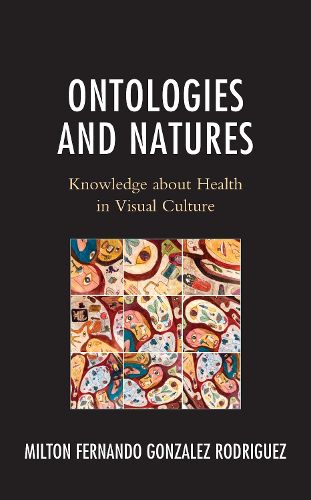Readings Newsletter
Become a Readings Member to make your shopping experience even easier.
Sign in or sign up for free!
You’re not far away from qualifying for FREE standard shipping within Australia
You’ve qualified for FREE standard shipping within Australia
The cart is loading…






In Ontologies and Natures: Knowledge about Health in Visual Culture, Fernando Gonzalez Rodriguez argues that visual culture offers insights into how societies perceive the role of nature in their own and others’ pursuits to cure and care for the human body. By using a set of visual surfaces and artefacts as entry points-such as vlogs, toys, cosmetics, psychotropics, stamps, posters, and animation, among others-the book sheds light on the evolution, circulation, and rootedness of ideas about nature as a healing source. The first part of the book considers how visual culture operates as a vehicle to diffuse, transmit, mediate, and communicate health-related knowledge and imaginaries about the role of nature in medicinal therapies (e.g., a dictionary). The second part explores the process by which nature becomes a consumable, encapsulated in objects defined by their visual and material traits. The author focuses on items such as labels on packages of herbal cosmetics and infographics about superfoods. In the third part, Gonzalez Rodriguez examines the situatedness of health within two physical contexts: geographical and mental. Methodologically, the book is informed by historical sources, visual-virtual ethnography, content analysis, and semiotic-linguistic analysis of objects from all corners of the globe, paying particular attention to Indigenous traditional knowledge(s).
$9.00 standard shipping within Australia
FREE standard shipping within Australia for orders over $100.00
Express & International shipping calculated at checkout
In Ontologies and Natures: Knowledge about Health in Visual Culture, Fernando Gonzalez Rodriguez argues that visual culture offers insights into how societies perceive the role of nature in their own and others’ pursuits to cure and care for the human body. By using a set of visual surfaces and artefacts as entry points-such as vlogs, toys, cosmetics, psychotropics, stamps, posters, and animation, among others-the book sheds light on the evolution, circulation, and rootedness of ideas about nature as a healing source. The first part of the book considers how visual culture operates as a vehicle to diffuse, transmit, mediate, and communicate health-related knowledge and imaginaries about the role of nature in medicinal therapies (e.g., a dictionary). The second part explores the process by which nature becomes a consumable, encapsulated in objects defined by their visual and material traits. The author focuses on items such as labels on packages of herbal cosmetics and infographics about superfoods. In the third part, Gonzalez Rodriguez examines the situatedness of health within two physical contexts: geographical and mental. Methodologically, the book is informed by historical sources, visual-virtual ethnography, content analysis, and semiotic-linguistic analysis of objects from all corners of the globe, paying particular attention to Indigenous traditional knowledge(s).